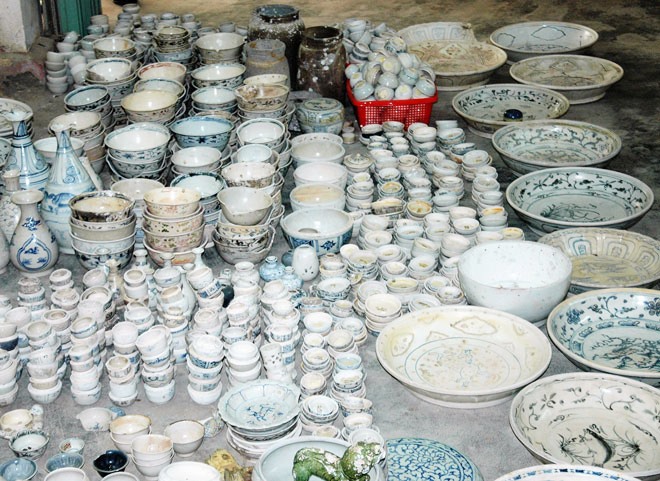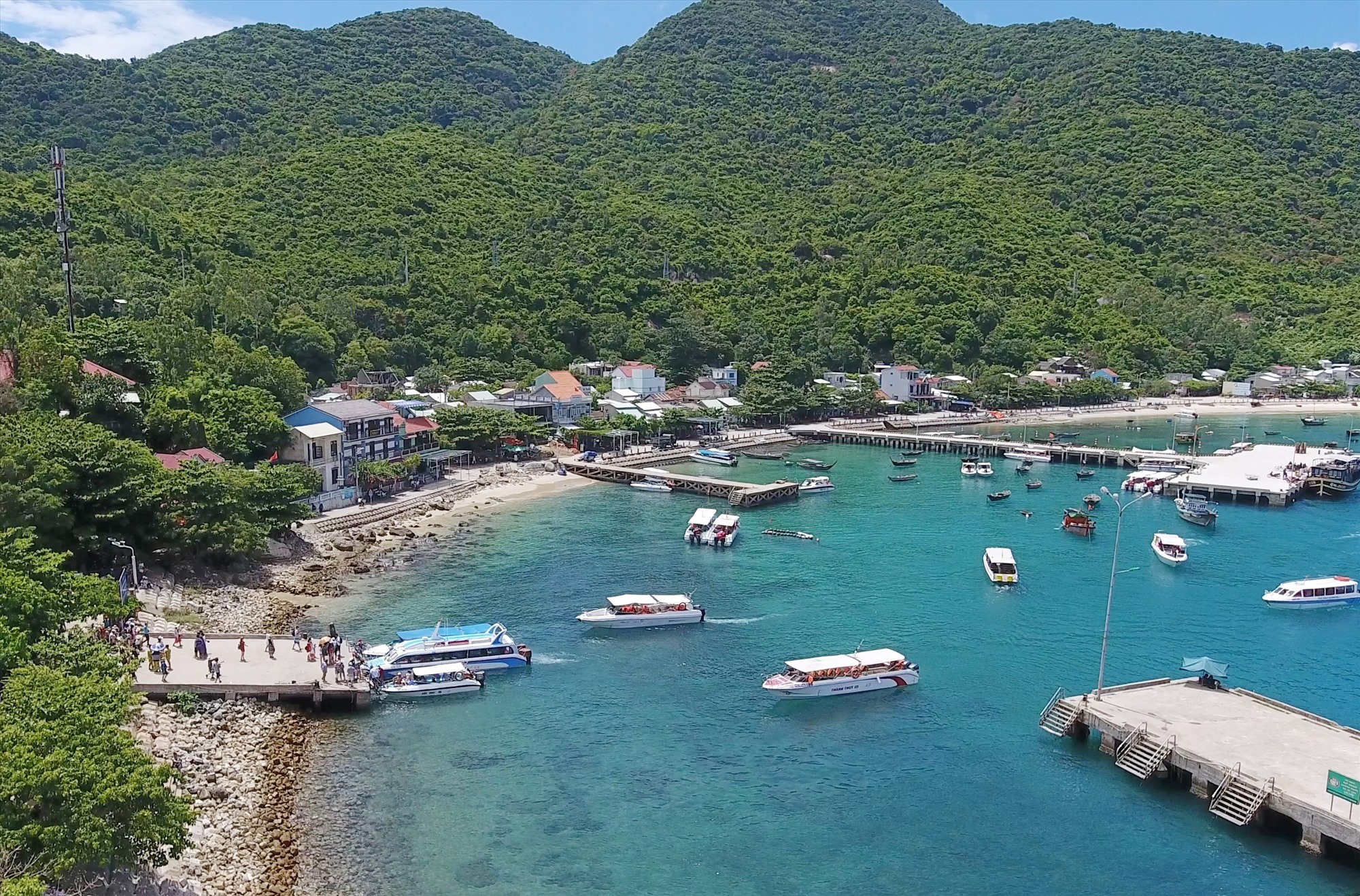One autumn day in the middle of the 15th century, a Thai merchant ship left Van Don harbour of Quang Ninh province, carrying a huge volume of pottery from Chu Dau pottery kiln.

Chu Dau ancient ceramics picked up from the shipwreck in the waters of Cham Islands. Photo: Baodanang.vn
Secret revealed after 500 years
Going by the waters of Cham Islands (Hoi An district, Quang Nam province), the ship hit big waves and sank to the bottom of the ocean.
More and more pottery was coincidentally picked up by fishermen in the waters of Cham Islands, which attracted the attention of experts and related services.
With the approval of the Government of Vietnam, the excavation of Chu Dau pottery was conducted during three years (1997-1999).
It was the first time the archaeological excavation had been carried out at a depth of 70 metres underwater. The second excavation was carried out from 2005 to 2007.
After two excavations, over 260,000 antiquities were collected, including glazed pottery, crockery, metal objects, wood objects, stoneware, human remains, and millions of pottery fragments.
After several analysis, the shipwreck was determined to belong to a Thai merchant. It was supposed to arrive at Van Don seaport in spring and came back in Autumn. When passing through the waters of Cham Islands, the ship sank to the bottom of the ocean.
According to experts, the antiquities on the shipwreck were made in Chu Dau pottery kiln (Hai Duong), dating from the 15th century.
Pottery in the Maritime Silk Route
The antiquities found in the shipwreck include 18 main types and more than 100 sub-types, such as blue floral ceramics, colorful ceramics, turquoise ceramics, white ceramics, floral ceramics, brown ceramics, and crockery.
The decorative patterns on the ceramics are extremely rich in themes and styles, presenting the images of Dai Viet country (Vietnam today) in the 15th century.

Cham Islands, Hoi An city, Quang Nam province
Besides, they describe the daily activities of the Vietnamese then, including the relationships of government officials and inhabitants, teachers and students, and romance.
The patterns on the objects collected also express the happy and peaceful life, the ideology of the Dai Viet people then.
The images such as lotus, mums and banyans along with the swastika (卐) refer to Buddhism. The unicorn and dragon horse are symbolic of Confucianism. Rhino horns, jewels, peaches, etc. refers to Taoism.
All the patterns also show the talent of Vietnamese artisans then.
The excavation of the shipwreck in the Cham Islands waters contributes an extremely vivid evidence to the study of international trade of Vietnam in the past.
At the same time, it proves that Vietnamese pottery actively participated in the Maritime Silk Route in the 15th and 16th centuries.